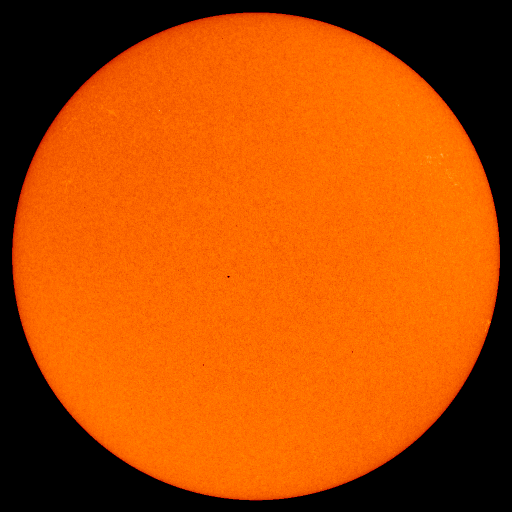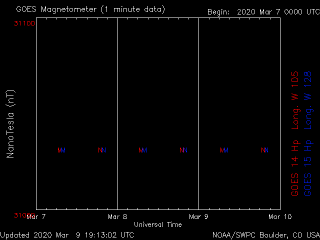|
Tamke-Allan Observatory holds public stargazes several times each month, especially on evenings with clear skies or spectacular celestial views. These evenings are announced via email or text to members of ORION, our local astronomy observing and astrophotography group, and to our Astronomy students. Checkout ORION and you might also check the Astronomy Calendar for the Knoxville area. Or you can save a link to the Calendar in your Internet browser. | ||||
|
|
||||
|
Telescope Making Telescope making/mirror grinding is
a hands-on activity for everyone (students, amateur astronomers
and visitors).
Roy Morrow used James Nolan's camera to capture a beautiful image of the Dumbell Nebula (a planetary nebula from an exploded star). I took a photo of it with my cell phone and it looked like this:
The scope camera had a better image, but I took this one with my iPhone. One can see the remaining white dwarf star at the center of the Dumbell. May 6 was a busy evening, as we entertained the students and parents at Linden School in Oak Ridge, at their new amphitheater. Saturn and Luna were excellent targets. What a nice group of people! We had 6 telescopes and several hundred observers. In truth, there were 2 Saturns, but the first one had wheels and rolled away. The second had beautiful rings and a prominent moon, and delighted the crowd. Recent (Nov. 2013) astrophotography by Shawn Harrison was displayed in real time on the TAO Mobile Solar Observatory rear-screen projector:
We discussed whether Galileo could have seen the Crab Nebula in beautiful skies Italian without light pollution, about the year 1535. He saw and wrote extensively about Saturn. The answer is perhaps yes. We looked at some astrophotos, including those by local people (e.g., as in the photo above, taken just before the hard drive filled up). Skies provided great visibility, but seeing near the horizon was bad because of the turbulence. Bring telescopes, red flashlights, astronomy gadgets and cookies. The evening will offer opportunities for viewing and Luna (with craters), and Jupiter with 3-4 nearby moons. Expect Stargazes on the first and
third Saturday evenings of each month. Amateur astronomers bring
telescopes and binoculars and offer views of astronomical objects,
while visitors are invited to bring their telescopes, questions
and cookies to share with the astronomers.
............................................................... Here's a gazing ball image from 5/19. Note the heavy light pollution along the horizon and illumination of the classroom by the light trespass (click for full size image). This is a 11 PM photo and the light pollution prevents viewing around the horizon. Tamke-Allan Observatory of Rockwood is a treasure of Roane County. It hosts free Public Stargazes on the first and third Saturday evenings of each month. These stargazes have opened the night skies, free of charge to everyone, for the past 10 years. Amateur astronomers bring telescopes and binoculars and offer views of astronomical objects, while visitors are invited to bring their questions and cameras and meet the astronomers. Kids are especially welcome. Too much light causes glare – a hazard on our highways. Directing light downward where it is needed conserves energy and gives us a safer, more secure community. It also keeps our observatory open for education and research. When was the last time that you could see our beautiful milky way? We are losing our Roane County Heritage in the glare of unshielded lights. Star Party Etiquette * Bring a red flashlight and avoid
using any white light after dark. TAO Academic Associates are Colleges, Universities and other educational institutions that have both faculty and students that share research and scientific goals. The emphasis is not just scientific -- this is a humanistic endeavor that encourages both cultural exchange and critical thinking. Our Associate Groups: ORION is a local science and engineering oriented group that supports astronomy public events, field trips and lectures on current related topics. Group activities are centered in Oak Ridge and at TAO. Orion members support the Tamke Allan Observatory Monthly and meetings are held at the Roane State Community College, Oak Ridge Campus, on third Monday evenings at 1900 h (7:00 PM). Local astronomers participate in TAO Stargaze events.. TAO serves as the center for astronomy classes, optical astronomy and radio astronomy observing as well as and public stargazes. To subscribe to ORION news items, contact ORION
TAO Pleiades Cluster Status
In doing radio astronomy, TAO supports the Society of Amateur Radio Astronomers (SARA). SARA materials and ideas turned up at the TAOSON exhibits at the 2010 Rockwood Fall Festival in Rockwood, TN:
IDEAS Perspectives on good astronomy occasionally appear on the Bad Astronomy Blog, at http://www.badastronomy.com/intro.html |
We enjoyed Solar-planetary viewing, satellite communications, and a special event Amateur Radio Station. Here's a photo of our STEM teacher's group, learning "From Earth to the Stars with STEM" on Dec. 8: .
Dark skies on a night in December revealed Aurora from TAO (note our weather station). Photo by Astronomy class student Robert Quinn.
The following sunset photo was taken on Astronomy Day, May 7, 2006.
Sometimes our POD actually glows. The source of the light is something that visitors are encouraged to discover.
Solar Photos Here are photos from Heather Fries showing the sunset, and some of our visitors.
M15, M27 and M33
by Roy Morrow (above) Astrophotography at TAO
TAO astronomy students visited UT and built a scintillation detector containing several plastic scintillators and 4 photomultipliers. The complete cosmic ray detection system is now in place and TAO is part of the TEnnessee Cosmic ray Observatory Project (TECOP).

Our 15m (wavelength) radio astronomy sytem responds to changes in D-layer density. If the greyline(grey area on the map) is above TAO then we get terrestrial transmitter interference in our Skypipe Jupiter/Solar monitor receiver. Signals which travel inside the grayline region often experience significant improvements in propagation because of the loss of ionization in the D-region as the Sun sets. However, because the higher F-regions of the ionosphere remain strongly ionized for longer periods of time, signals with higher frequencies are able to travel to greater distances with less attenuation when they are within the grayline. The current solar position is shown in the yellow area. Click on the image for more informaton. TAO proudly supports the Night Sky Network through our associated astronomy clubs in Oak Ridge, Knoxville, and Tellico Plains
|
Find the Observatory TAO Radio Astronomy
Radio Astronomy 3. "Data Relay from Remote Sensing Instrumentation" June 17: Radio Astronomy 4. "More on Radio Astronomy and EM Spectra" Radio Astronomy 5. "How did our VLF Radios become SDR Radios?" Radio Astronomy 6. "Radio
Transmitter for GPS and Data Relay"
July 15: Radio Astronomy 7. "Astronomy when the Clouds Appear" Aug. 5: Radio Astronomy 8: "The Aug. 21, 2017 Eclipse and Radio Astronomy" Aug. 19: Radio Astronomy 9: "Radio Astronomy: Signal bounmces from the Moon, and the Aug. 21 Eclipse" Nov. 17, 2018: Radio Astronomy 10: TAOsat and the European Astro-Pi Initiative Feb 2, 2019: Radio Astronomy 11: Can the US have something like the ESA Astro-Pi Initiative
Radio Astronomy is one focus of our TAO activities. Here is an image of a poster showing how we are using the Itty Bitty Telescope (IBT) as part of the SARA-NRAO Radio Navigator's Group (click for full size, and we are happy to share the poster). Maryville Scouts visited us on March 5, 2016 Scoutmaster Chris brought Troop 700 from Maryville and they filled the classroom. What a group -- with questions and a lot of interest in learning how to find Jupiter (and moons) with our 8" refractor. They were already a part of the TAO action since it was one of their Eagle Scouts who built our camping area in our woods. They brought us coffee and 3 types of strudle (!) and we shared our telescopes (Thanks Jan, DR, and George), Jim Long's Spagetti, 2 kinds of bread, cookies, chips, etc. It was a beautiful evening, after those clouds cleared. Eye patches for Dark AdaptationI used to wear an eye patch to dark adapt but later, decided to simply close an eye when needed. I was wrong. Itt turns out that pirates were on the right track in wearing eye patches. I had thought that they should just have closed their eyes to dark-adapt to go below-decks but no -- blood transmits wavelengths (heavy curve) that bleach ocular rhodopsin (light curve)  Shiver me timbers and belay any discard-patch advisories. Wearing an eye patch for dark adaptation is a good idea.
TAOrem launch
This was a success. Past and future
students and amateur astronomers were invited. Launch of this
remote sensing balloon occurred at 4 PM on 1/17/2015 from Tamke-Allan
Observatory in East TN, USA, 35.8325 Lat, -84.618 Lon. Transmissions
were 110baud ASCII, 8b, 2s, np on 433.97462 MHz upper sideband,
with ID WA4ADG-1 as announced on http://arhab.org/hab_launch_list.php
and tracked on http://www.roanestate.edu/obs Sunspots Today Sunspots areassociated with Coronal Mass Ejections That Change the Planet and its Aurora
Image of Saturn by Michael McCulloch Friendly local astronomy groups: TAOSON (TAO Solar Observation Network) Signal (issues)
| ||
|
The above photo was taken in our classroom during one of our Public Stargazes.
| ||||



































